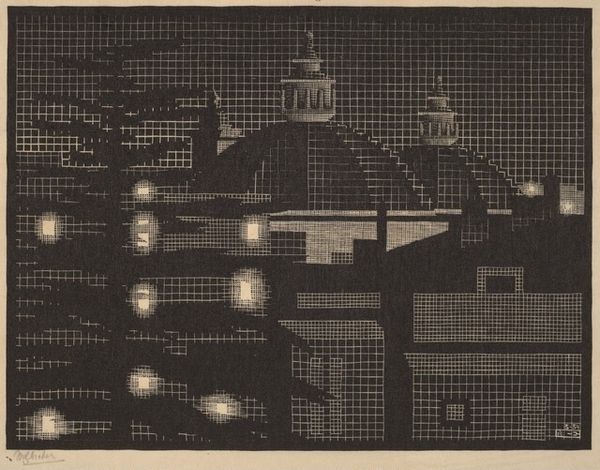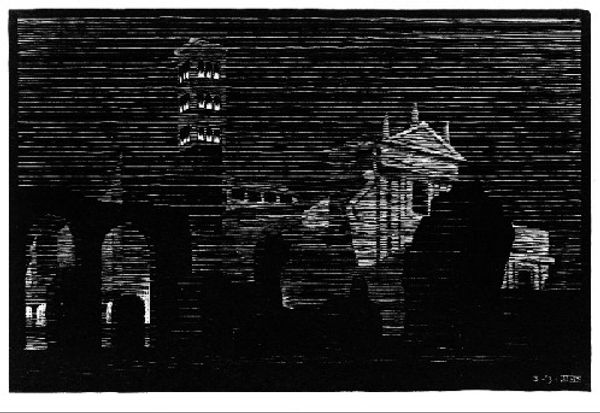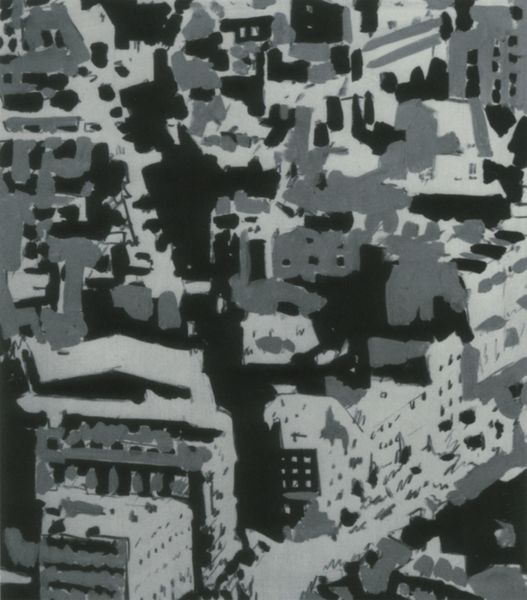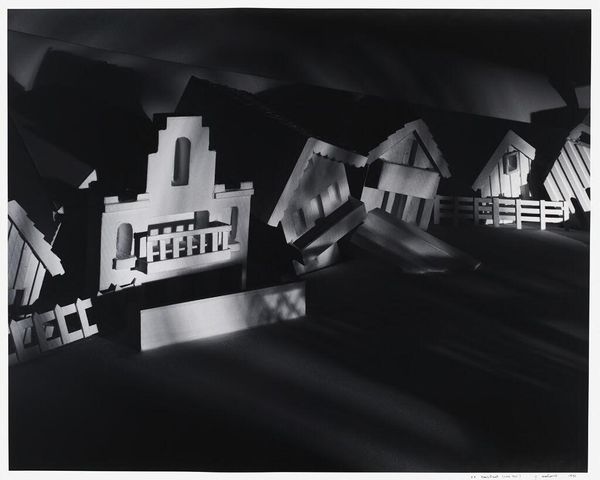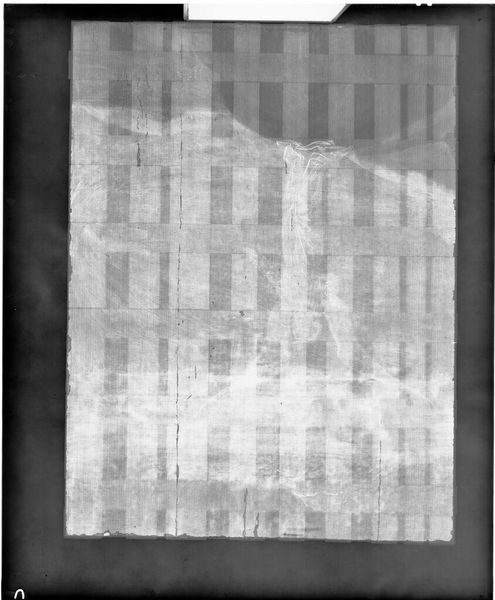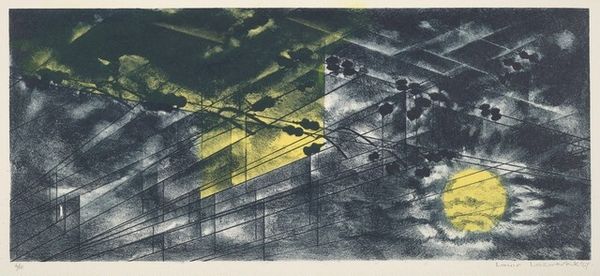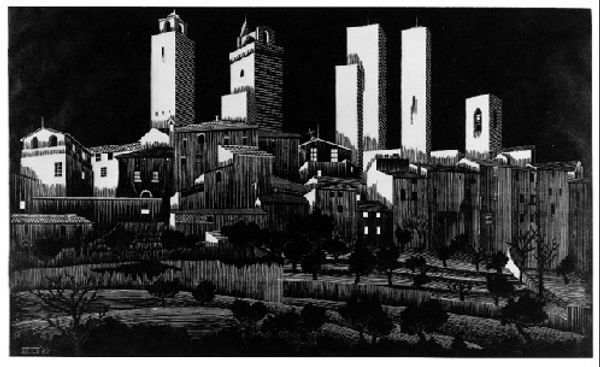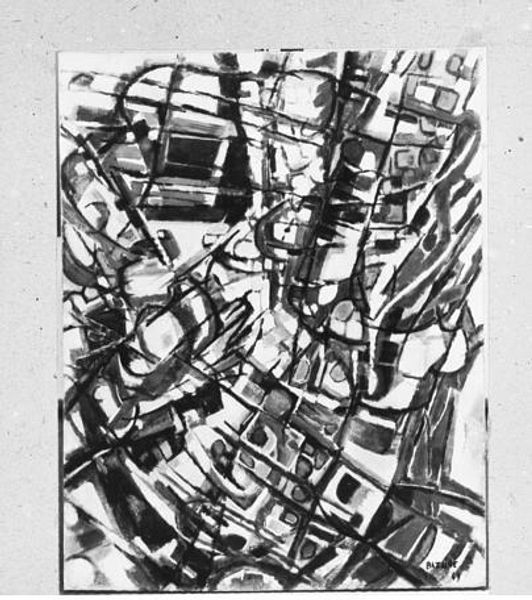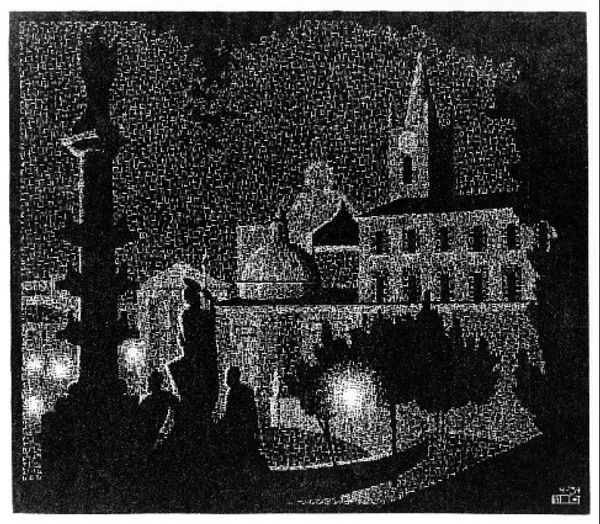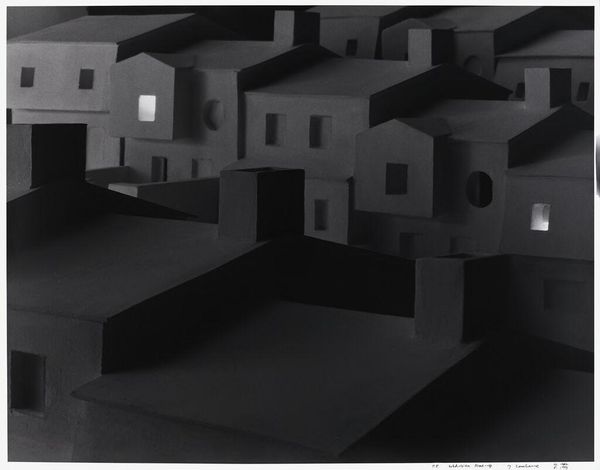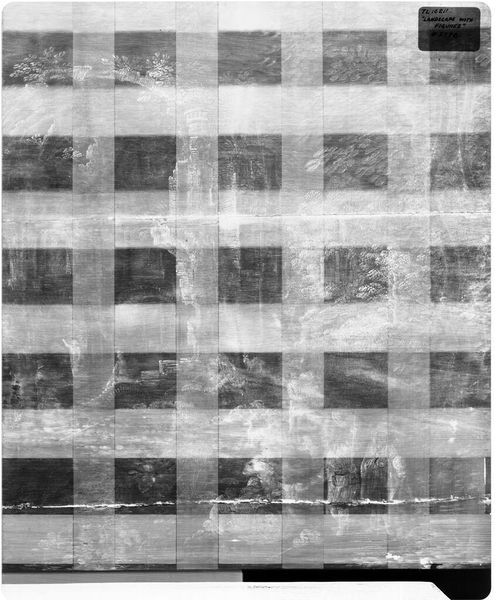
drawing, print, graphite
#
drawing
# print
#
geometric
#
architectural drawing
#
graphite
#
cityscape
#
street
#
modernism
Copyright: M.C. Escher,Fair Use
Editor: This is M.C. Escher's "Nocturnal Rome," a graphite drawing and print from 1934. I'm struck by its somewhat haunting, almost unsettling depiction of the cityscape, especially how he uses the grid. What do you see in this piece? Curator: Escher’s “Nocturnal Rome” offers a compelling lens through which to examine the socio-political currents of its time. Rome in the 1930s was under the firm grip of Mussolini’s fascist regime. Escher, though Dutch, lived in Italy during this period. Considering this, how might the starkness and almost oppressive grid-like structure of the print reflect or perhaps subtly critique the enforced order and control emblematic of fascist ideology? Editor: So, the geometric structure isn't just a visual element but possibly a commentary on the political climate? I hadn't considered that. Curator: Precisely. Look at the oppressive darkness and light contrast – a common artistic tool. Escher uses this to possibly underscore a societal tension, between public presentation, in light, and private dissent, in the dark shadows. Do you think this can relate to individual liberties and suppression within a political system? Editor: That's fascinating! I can definitely see that interpretation now, considering the historical context. Curator: This tension pushes us to consider the artwork not only for its visual ingenuity but also for its implicit commentary on power and control in the period it was produced, offering insights into potential intersectional critiques of politics, race, gender and identity that transcend national boundaries. What did you make of this conversation? Editor: This has given me a completely new way to approach and analyse art beyond just its aesthetic value!
Comments
No comments
Be the first to comment and join the conversation on the ultimate creative platform.
